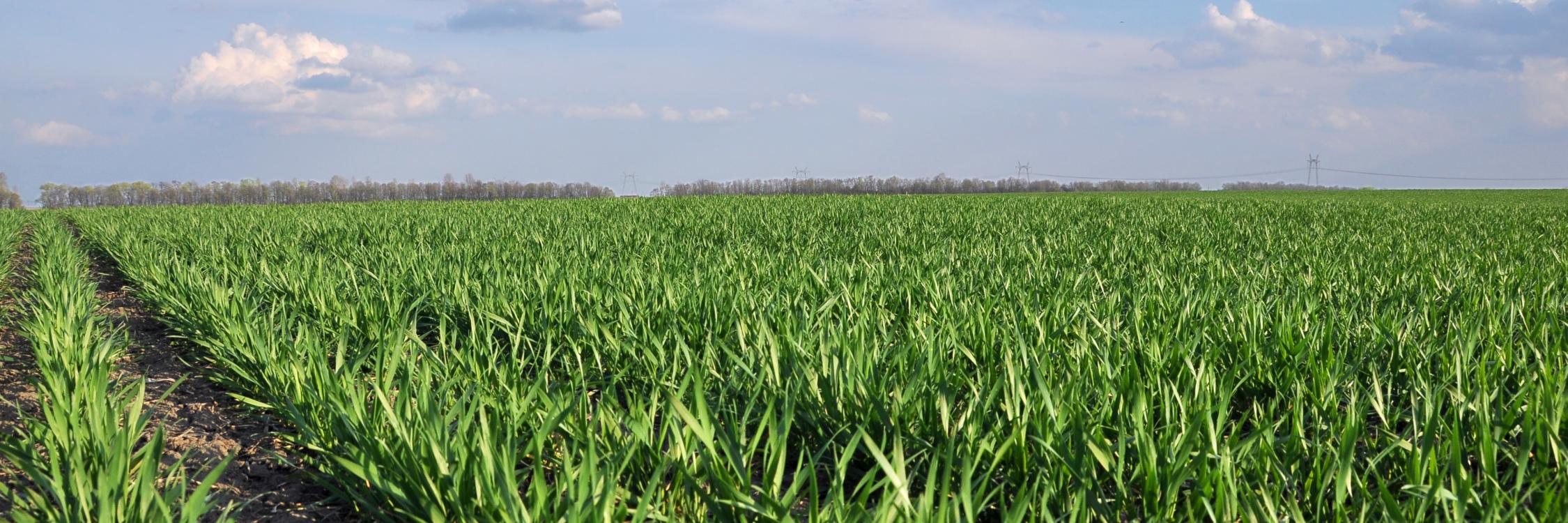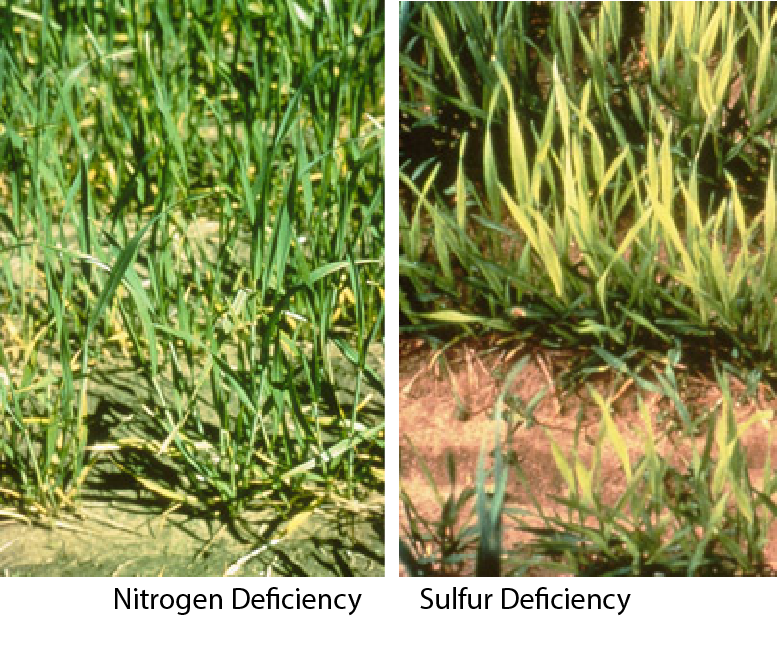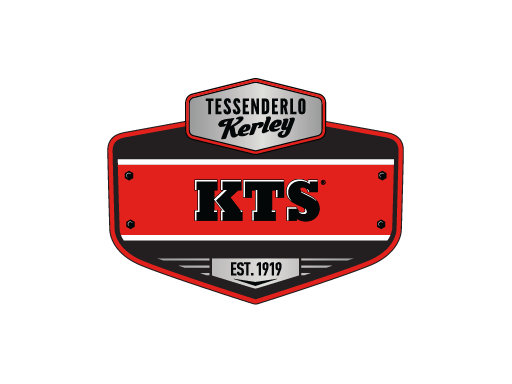
Sulfur and Nitrogen Deficiencies Look Similar. How to Tell the Difference in Winter Wheat.
Importance of Sulfur
Sulfur (S) is often referred to as the fourth most essential nutrient in crop production and is an important component of amino acids and proteins. In the soil profile, sulfur is a mobile nutrient and exists as plant available sulfate (SO42-) and as organic sulfur that is stored in organic matter. Most crops require around a 10:1 nitrogen (N) to sulfur ratio for optimal production. When testing for soil sulfur levels, a deeper soil sample up to 24” is recommended to fully measure soil sulfur levels due to sulfur’s mobility within the profile.

Identifying Sulfur and Nitrogen Deficiencies
Identifying sulfur deficiencies in the field can be challenging and often mistaken for nitrogen deficiencies. Sulfur and nitrogen deficiencies look similar in that they are characterized by chlorosis or yellowing of the leaves. The key difference between the two is the location of the leaf chlorosis. Sulfur is not mobile within the plant meaning that the deficiency will show up on new growth and the lower leaves or tillers will remain green.
Nitrogen on the other hand, is mobile within the plant causing the lower or older plant growth to turn yellow. Here are pictures illustrating the visual differences.
Photo Credit: Nutrient Deficiencies in Wheat - UNL CropWatch/Nebraska Extension
Sulfur deficiencies often show up in wheat fields during early spring growth when the crop is breaking dormancy and greening up. This can be due to lower soil sulfur levels and less sulfur mineralization from organic matter during cooler soil temperatures. Additionally, at this growth stage the rooting system of a wheat crop is still relatively shallow and may not be able to fully access sulfur that is lower in the profile. During the spring if deficiencies are noticed, it is important to get a timely application of sulfur out on the field to correct the symptoms before it becomes more severe. When top-dressing sulfur, it is critical to choose a fertilizer source that will be readily available to the crop.
Tessenderlo Kerley Sulfur Fertilizers and Applications
Our fertilizers Thio-Sul (12-0-0-26S) and KTS (0-0-25-17S) are two liquid sulfur fertilizer options that deliver soluble sulfur to your crop. Thio-Sul and KTS can be blended with UAN in a variety of ratios, allowing for customized blends to fit your specific crop nutrient needs. A common blend used in the Midwest for top-dressing wheat is 28-0-0-5S. This blend of Thio-Sul and UAN delivers N and S at a ratio of 5.6 to 1. When including thiosulfates with a UAN blend it is recommended to use streamer bars or nozzles when top-dressing to lessen leaf burn that can occur at high rates. If you are needing additional potassium (K) in-season, KTS can be a great option to boost available potassium levels for the crop and potentially increase grain protein. When blending KTS with UAN, equal parts by weight of KTS and water are needed for compatibility.

Thio-Sul
- Ammonium Thiosulfate
- Helps improve nitrogen use efficiency and prevents nitrogen loss
- Registered nitrification inhibitor
- Can be applied through most irrigation systems
- Easy to mix and handle, and compatible with most liquid fertilizers
- 12-0-0-26S

KTS
- Potassium Thiosulfate
- Highly soluble, chloride-free solution
- Improves the crop's ability to cope with drought stress and effectively utilize nitrogen
- Easy to handle and can be applied through all types of irrigation systems
- 0-0-25-17S
Written by Dr. Elizabeth Lemings, Tessenderlo Kerley Crop Vitality Agronomist
Contact a Specialist